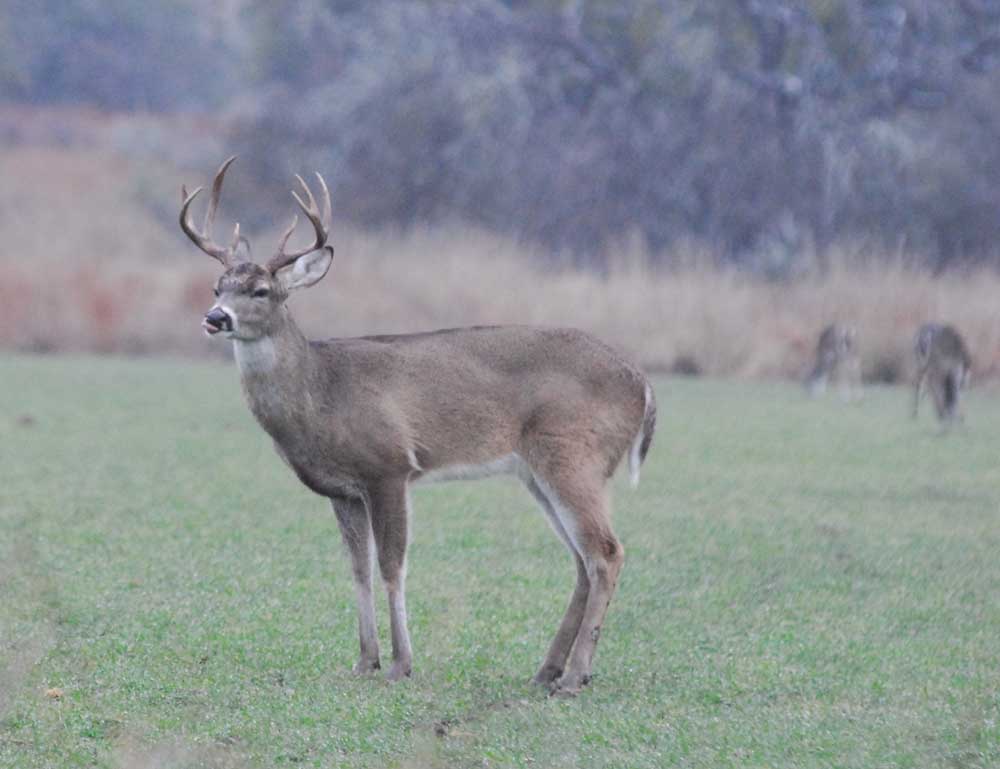On The Road Again: Pineywoods study shows deer are homebodies for the most part
Published 10:37 pm Thursday, October 5, 2023

- A Texas Parks and Wildlife Department telemetry study in the Pineywoods region showed bucks typically had a home range of about 600 yards when the habitat was good quality.
So, you have been watching that buck growing up since it was 2 ½-years-old. It showed good potential to become a quality buck even at an early age and has improved year after year.
At some point you start wondering should this be the year to take him, or risk letting him go another year hoping someone else does not shoot him or something else happens.
Managing for size comes with risks, concerns that are different from region to region across the state.
Texas Parks and Wildlife Department Wildlife Division biologists in the Pineywoods have conducted a deer tracking study, and while the results are still being calculated, anecdotal insights give hunters a good idea of what is happening when they are not in the woods that could help decision making.
“2019 was the first year we trapped and we continued in 2020 and the last year we trapped was in 2021. We followed those deer as long as the collars lasted or until the deer died,” explained Rusty Wood, Pineywoods region district biologist.
In all 22 deer were collared, with about 16 of those being bucks.
“Once you had a collar on a doe for three or four weeks you might as well take it off because you know everything you are going to know,” Wood explained of the lack of does in the study.
The study was conducted on the Alazan Bayou Wildlife Management Area in southern Nacogdoches County, U.S. Forest Service land and private property. Because of the difficulty of trapping deer in timberland, the majority came off the private property.
The final analysis is similar to other telemetry studies conducted in the South showing that for the most part deer do not move much, but that there are exceptions.
“Deer in good habitat don’t move as much as deer in bad habitat. We had one that was in Alazan Bayou along (U.S.) 59 and he used a lot more habitat than the deer on private land next door,” Wood said.
The biologist said bucks in the study became identified as homebodies and travelers. While the bayou buck was the biggest traveler, the distance it moved was much smaller than what might be seen in more open country around Texas or in other states.
The most famous example of a traveler is a deer known as Buck No. 140 from a telemetry study conducted by Mississippi State University. In that study most of the bucks had a home range from just over 100 acres to about 1,200 acres, except for Buck No. 140. He would spend his springs and summers in Louisiana soybean fields and then move 15 miles later in the summer to Mississippi’s South Delta region where there was more winter food and does during the breeding season. In the spring the buck would return to its Louisiana home.
In the Pineywoods studymost of the bucks on private property had a home range of about 600 acres. The does utilized about half that much. While the data crunch will eventually give more insight into daytime and nocturnal movement determined by heat, cold and other environmental factors, Wood said there was definitely more movement during the rut as expected. In the Pineywoods the rut peaks around Nov. 22 in the northern portion and Nov. 12 in the south.
Wood said one of the surprising factors was that major highways, and in this case U.S. 59, were a major barrier that the deer were hesitant to cross. The same was not true for smaller roads like Farm to Markets and county roads, but that created a different issue.
“We had a lot killed on the road. Maybe a quarter of them,” Wood said.
Others were legally harvest, and a number died from rutting activity, and not necessarily as the result of fighting.
“Some did not have a mark on them. They just laid down in the mud and died from the rut. They were younger deer and in shape. They just ran themselves to death,” Wood said.
One of the bucks in the study was poached, showing some habits die slowly.
“We found out it was pretty tough to be a buck. Only one or two were still alive when we finished the study,” Wood said.
As a result the study shows it can be harder to let a buck age to 6, 7 or 8 like they do on large ranches in South Texas or high-fenced properties.
Still the region can grow quality and even the trophy buck that slips through the gauntlet.
“We grow big deer. Birthdays are the biggest drawback. Antler restrictions are the best thing we have. We are 17 or 18 years into antler restrictions, and we are seeing more quality bucks in the herd. I think this year is going to be good,” Wood said.






